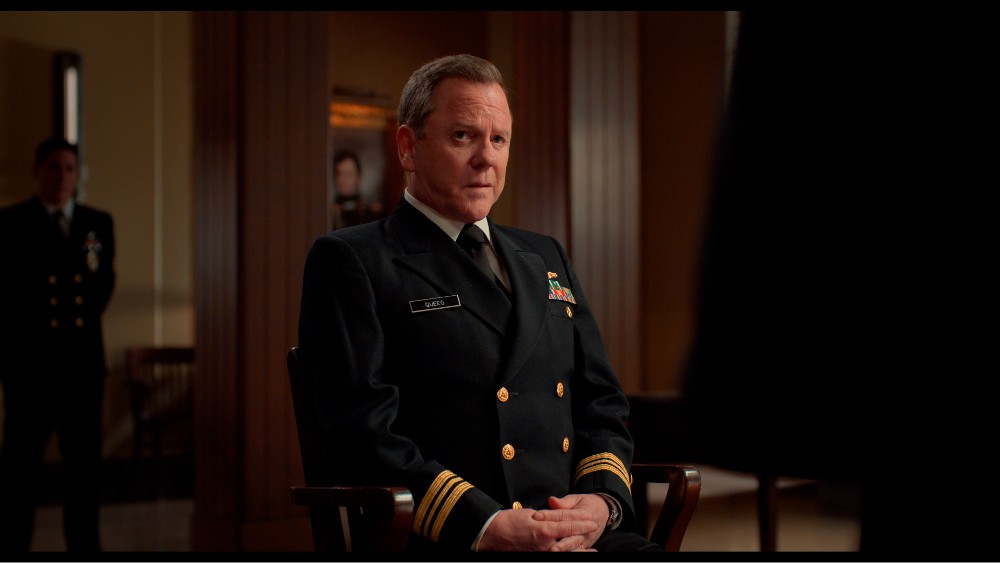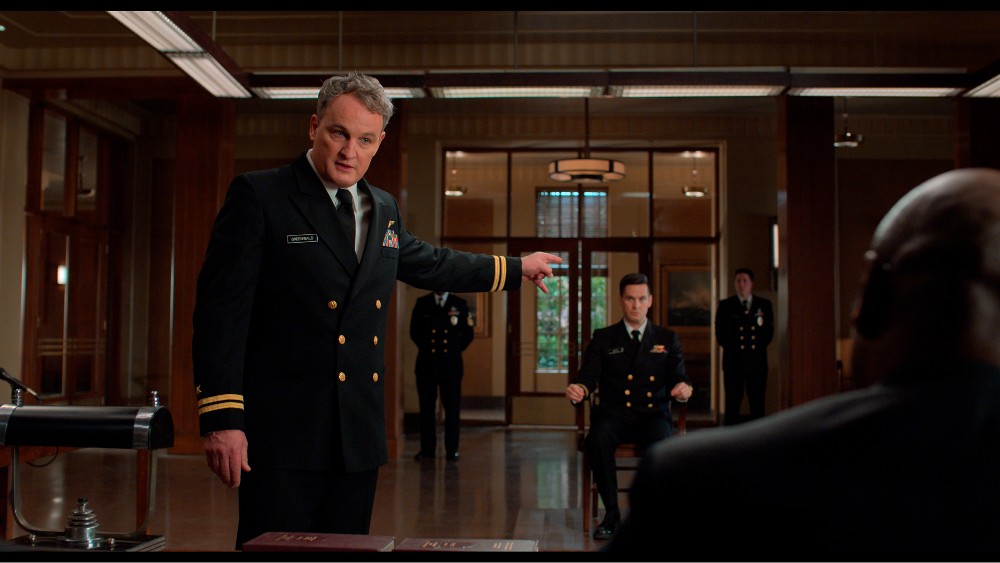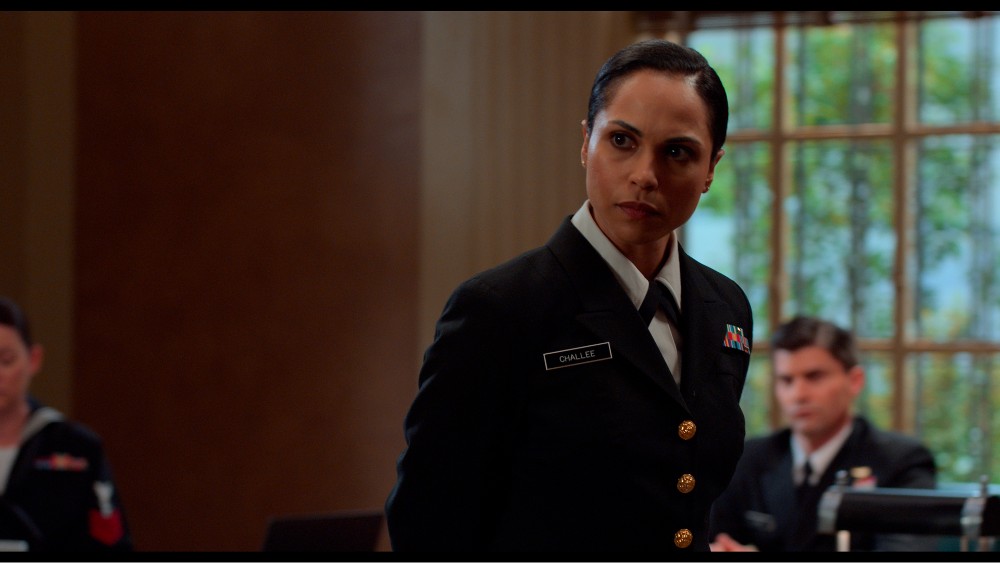
Oscar-winning director William Friedkin died at the age of 87 over this past summer, but how many knew that he was working right until the end, as his last film, The Caine Mutiny Court-Martial, would premiere less than a month later at the Venice Film Festival?
From the title, you could probably guess that Friedkin’s last film has something to do with the 1954 film based on Herman Wouk’s Pulitzer-winning novel from a few years earlier, but it’s also a new version of the 1988 Robert Altman-directed television movie of the same name.
In recent years, Friedkin had been adapting Tracy Letts plays (Bug and Killer Joe) for the screen. In many ways, you call tell this was originally meant as a stageplay with Friedkin handling the writing of the teleplay based on Wouk’s prior work himself. Apparently, Friedkin had been wanting to tell this story in this way for many years, but it’s hard to tell if this really a remake, since it seems so different from Wouk’s original work.

As the film opens, we meet Jason Clarke’s Barney Greenwald, the Naval lawyer who has quite begrudgingly been assigned to defend Jake Lacy’s Lt. Steve Maryk, who is being court-martialed for taking control of the USS Caine from the previous head of command, Lt. Philip Francis Queeg (Kiefer Sutherland), during a particularly violent cyclone. Maryk’s court-martial is presided over by the late Lance Reddick (his last film) with Monica Raymund handling the prosecution as Commander Katherine Challee.
There’s a well-intentioned adage in filmmaking to “show don’t tell,” but being a story told fully within a courtroom, it’s hard to avoid the fact that it’s essentially all dialogue describing the events on the Caine leading up to Maryk’s actions. This involves a number of Navy officers and psychologists brought to the stand to describe the events as well as evaluate Queeg’s mental state before Maryk stepped in.
Although there are only four main actors on screen for the entirety of the film, the work of Casting Director Denise Chamian in finding actors to portray all the smaller roles of those being put on the spot by Greenwald and Challee is part of what keeps The Caine Mutiny Court-Martial so riveting, even if we don’t see any of the events described.
The big takeaway from the original Caine Mutiny works tends to be the behavior of Queeg, and Sutherland’s Queeg is the first and final witness to take the stand in the case against Maryk, with Sutherland giving one of his strongest performances, one that could be vying for a third Emmy. Queeg’s first appearance on the stand is relatively innocuous, but by the time he returns, we’ve heard so many horror stories about his behavior, it’s just a matter of when he might explode ala Jack Nicholson in A Few Good Men. When Queeg’s famed metal balls first appear – a nervous tick the commander uses to relieve stress – it’s one of the moments in the film that’s a bit like your favorite band playing their greatest hit.

As much as Sutherland delivers on this classic film character, the entire cast brings so much to what ends up being a compelling exploration of Naval policy and politics, how the machismo drives how the story is told and then retold. Seeing Clarke in this role after a similar turn in Oppenheimer makes one realize that the Australian actor is quietly at the top of his subtlety game at the moment, and Raymund holds her own against him.
The Caine Mutiny Court-Martial might not seem like much of a crafts movie on the surface. After all, it all takes place in a single courtroom and the hallway just outside, the characters all wearing the same costumes in every appearance, as well as having the same impeccable hair and make-up. Even so, with a movie that’s so performance-driven as this one, the camerawork by DP Michael Grady (The Morning Show) and editing by Darrin Navarro (Euphoria) are crucial in capturing all the nuances Friedkin was able to get out of his cast.
Beautifully performed and realized, Friedkin ends his long-standing and esteemed career on a high-note with a courtroom drama that keeps audiences riveted, regardless of whether you’re familiar with the original material on which it’s based.
Rating: A-
The Caine Mutiny Court-Martial will stream on Showtime and Paramount+ starting October 6.





